Looking for simple school lunch ideas? You’ve come to the right place!
Let’s Take a Page out of Our Ancestors’ Cookbooks
With only a few days left before your young hopefuls go off to school again, I can see all you mothers, from Maine to California, getting down the lunchboxes you put away with such relief in June […] and I am sure you often feel as if you had run out of ideas when it comes to thinking up something new for those lunches. What to put in these boxes, that’s always the question! […] If your family is anything like mine, they will be brutally frank in letting you know what they like and what they don’t. […] I’m not going to try to persuade you that packing lunches is just fun…But I do say that it can be made an interesting job if we approach it in a spirit of adventure.
“Box Lunches that Intrigue Both Eye and Appetite.” Good Housekeeping. September 1936.
What is it they say about the more things change the more they stay the same?
In the United States and many other western nations, two things that have stayed the same since the late 19th century are a.) the need for many children to eat lunch at school and b.) the mental energy it has taken their grown-ups (but mostly their mothers) to figure out what to pack.
In the spirit of not reinventing the wheel, and also of giving myself some fresh ideas, I dove into the documents archived by the late Lynne Olver at the wonderful and addictive (you can’t click just once, try it) Food Timeline, now hosted by Virginia Tech. I was looking for simple school lunch ideas, with emphasis on simple. The suggestions for 1900-1969 were gleaned from that resource, as were the accompanying tips.
These simple school lunch ideas for the most part are not recipes. Instead, they’re suggestions of what to pack, along with handy tips from our forbears. Their lives were different from ours in many ways, but they went bravely before us in the battle of the packed lunch.
DISCLOSURE: This page may contain affiliate links. This means if you click on a link to a product or service and make a purchase, I may receive a commission at no cost to you. I choose affiliates with care and appreciate your supporting my work in this way. See Disclaimers and Affiliates for more information.

United States Wisconsin, 1939. Sept. Photograph. https://www.loc.gov/item/2017718635/.
A Bit of Historical Context for the School Lunch
School lunches (both purchased at school and packed from home) as we know them today have their origins near the end of the 19th century, amid developments toward standardization of public schools and the establishment of nutrition and domestic science as professional fields of study.
Then as now, many food professionals recognized the importance of providing children with a variety of healthy foods to support their growing bodies and minds. Articles and recipes with ideas for packed lunches began to appear in cookbooks and magazines as a means of educating the public.
How I Chose These Simple School Lunch Ideas
I’ve chosen the foods listed below for simplicity and likelihood of appealing to today’s children. The 20th century was the age of highly processed food becoming a significant part of the American diet, so I’ve left out most of the pre-packaged options. Early food science was also a time of some strange attempts to get various nutrients in one meal, which led to some rather odd combinations. I also haven’t repeated the same food in various sections. Instead, I’ve mentioned it at the earliest decade where it shows up in the sources I used (which is not to say that’s the earliest decade it shows up–this is a list of ideas, not a history of each food).
This shouldn’t be taken as a definitive list of what schoolchildren ate in various decades. Then as now, there is what is written in women’s magazines and cookbooks and what is actually done. Rather, these are options that were available and recommended. Some are probably familiar to today’s children, but I think you’ll find some new ideas too.
A Note on Peanuts: Peanut butter figured prominently in the American schoolchild’s diet during the 20th century. Most American schools today are peanut-free due to life-threatening allergies, and many are also tree nut free. I have found sunflower seed butter to be an acceptable substitute, but check with your child’s school.
|Related: 5 of My Favorite History Podcasts for Kids, Teens, and Families
23 Simple School Lunch Ideas from the 1900s
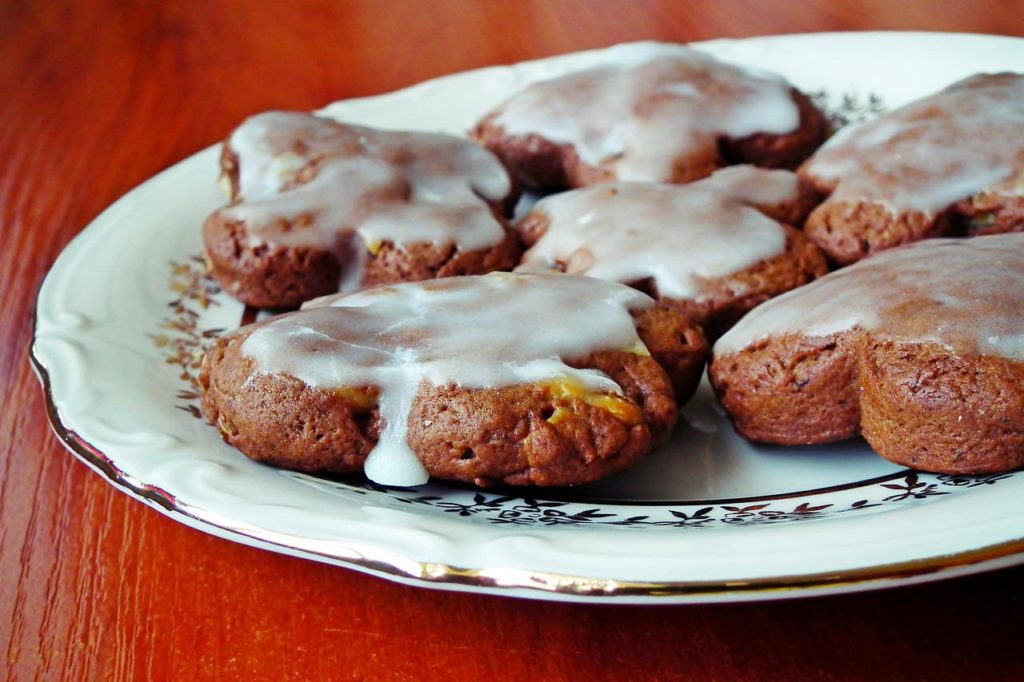
“A luncheon box may be made a source of pleasure to the school child or everyday worker. To bring this about, the foods must be varied on successive days. It is not necessary that each luncheon consist of various foods.”
A Text-Book of Cooking, Carlotta C. Greer [Allyn and Bacon: Boston] 1915 (p. 328)
Sandwich Fillings:
- Cream Cheese
- Jam
- Ham
- Peanut Butter*
- Chopped Egg
- Orange Marmalade (Channel your inner Paddington.)
Sandwich Breads:
- Boston Brown Bread (I had to look this up, but it looks delish and simple to make.)
- White Bread
- Whole Wheat Bread*
*I have celiac disease, so just typing those words made me shudder. If wheat is a problem for you, substitute “whole grain.”
Sides:
- Olives
- Deviled Eggs
- Sweet Pickles
- Celery Sticks
Fruits:
- Pear
- Peach
- Apple
- Figs
- Applesauce
- Orange
- Plum
Desserts, or I Hope You Like Ginger
- Gingerbread (like a cake)
- Gingersnaps (crunchy cookie)
- Ginger Cookies (soft cookie like those pictured above)
12 Simple School Lunch Ideas from the 1910s
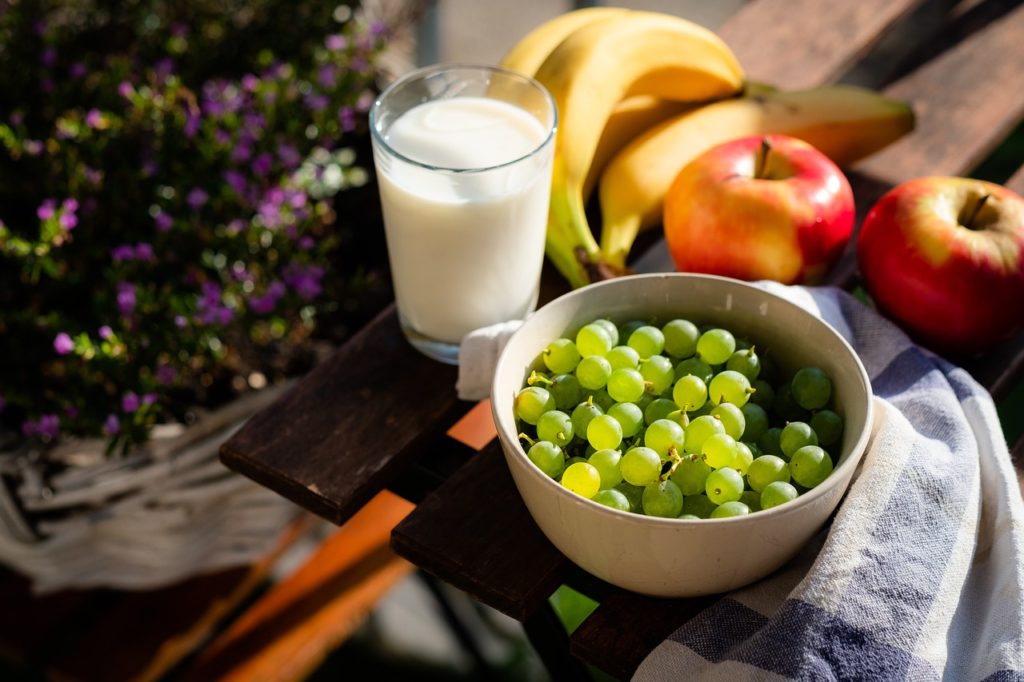
Sandwich Fillings:
“Sandwiches made with sweet fillings are most popular among children. Some of them make good substitutes for cake, and are much more easily digested.”
—A Text-Book of Cooking, Carlotta C. Greer [Allyn and Bacon: Boston] 1915 (p. 328)
- Sliced Meats
- Cheese
- Bananas
“If sandwiches are prepared some time before they are served, they can be kept moist by wrapping in a dry towel, covered with a towel wrung out of hot water.”
—A Text-Book of Cooking, Carlotta C. Greer [Allyn and Bacon: Boston] 1915 (p. 328)
Breads:
- Muffins
- Rolls
“Variety may be had by serving bread sometimes in the form of muffins or rolls.”
—A Text-Book of Cooking, Carlotta C. Greer [Allyn and Bacon: Boston] 1915 (p. 328)
Sides:
- Radishes
Fruits:
- Grapes
- Strawberries
- Raspberries
- Sliced Pineapple
Desserts:
- Sponge cake (plain, no icing)
- Ladyfingers (My daughter loves these, and I buy them packaged in the store.)
10 Simple School Lunch Ideas from the 1920s
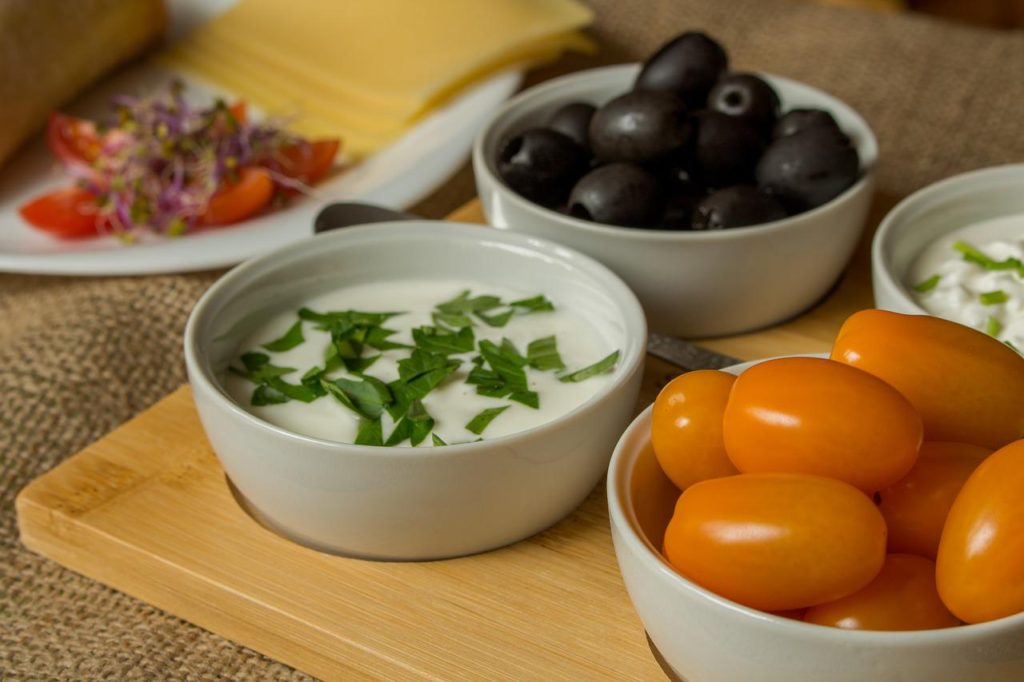
The “hot-cold bottle,” better known by its first and most popular brand name, Thermos, was introduced to Americans in 1907. By the 1920s it became an indispensable (ha!) packed lunch accessory. The Thermos Timeline is a fun resource to learn more about how this lunchtime staple came to be.
Hot Main Dishes:
- Tomato Soup
Sandwich Fillings:
- Jelly
- Butter (It’s not just a condiment. Bread and butter sandwiches were a thing.)
- Sliced Tomatoes
- Turkey
- Chicken
- Chicken and Tomato
Sandwich Breads:
- Graham Bread (Like a graham cracker in bread form.)
“In selecting sandwiches, choose those that will balance the menu; remember that as much filling, proportionately, should be provided as the child would eat of that particular food were it served to him at home upon a plate.”
—Mrs. Allen on Cooking, Menus, Service, Ida C. Bailey Allen [Doubleday, Doran & Company: Garden City NY] 1924 (p. 44-6)
Sides:
- Whole tomatoes (The source doesn’t specify, but I’d go with cherry or other small varieties.)
Fruits:
- Dates
10 Simple School Lunch Ideas from the 1930s
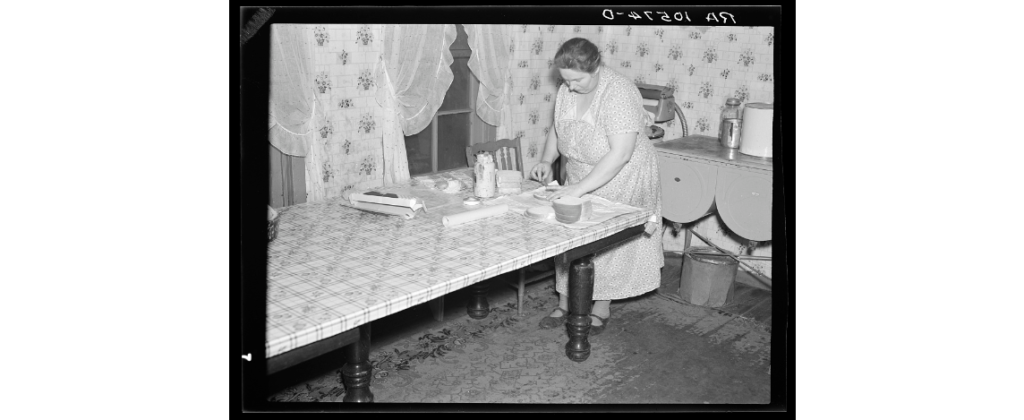
Hot/Cold Main Dishes:
- Vegetable Salad (This is what we might call a green salad. Lettuce/greens with the toppings.)
- Vegetable Soup
Sandwich Fillings:
- Marmalade and Peanut Butter*
- Honey and Peanut Butter*
- Lettuce (Yep, just lettuce.)
- Pim(i)ento Cheese (You can buy it at the store, or you can find the oldest cook you know and ask for their recipe. Failing that, find a church cookbook from the 1970s or earlier. I can’t with the ones I’m finding online–they’re too complicated.)
- Egg Salad and Bacon (Delicious or crazy or crazy delicious? You decide.)
Sides:
- Carrot sticks
- Crackers
Desserts:
- Oatmeal Cookies
20 Simple School Lunch Ideas from the 1940s

“Be sure to choose foods which the luncher can handle easily and and eat quickly–particularly if his rest period is short.”
—The Good Housekeeping Cook Book, completely revised edition [Farrar & Rinehart: New York] 1944 (p. 846-7)
Hot/Cold Main Dishes:
- Chicken Leg (also known as drumsticks)
- Potato Salad
- Baked Beans
- Chili con Carne
- Beef Stew
- Cream of Tomato Soup
Sandwich Breads:
“Because sandwiches are so often the mainstay in the lunch box, coax tired appetites by varying the bread you use.”
—The Good Housekeeping Cook Book, completely revised edition [Farrar & Rinehart: New York] 1944 (p. 846-7)
- Raisin Bread
- Rye Bread
Sandwich Fillings:
“Be generous with sandwich fillings, then the sandwiches will be far more tempting.”
—The Good Housekeeping Cook Book, completely revised edition [Farrar & Rinehart: New York] 1944 (p. 846-7)
- Salami
- Meatloaf (That’s one way to use up leftovers. I know it’s not everyone’s thing, but I love meatloaf, so I included this.)
- Apple Butter (I love apple butter, but I’ve never had it on a sandwich. Definitely trying this for the fall!)
Breads:
- Cheddar Corn Muffins
Sides:
- Watermelon Pickles (Sometimes you can find these at farmers’ markets or fruit stands, but if you’re concerned about food waste and want to try making your own, check out the recipe!)
- Lettuce Wedge
- Dill Pickles
- Hard-boiled egg
- Cheese Crackers
Fruits:
- Fruit Salad
Desserts:
- Soft Molasses Cookies
- Brownies
11 Simple School Lunch Ideas from the 1950s
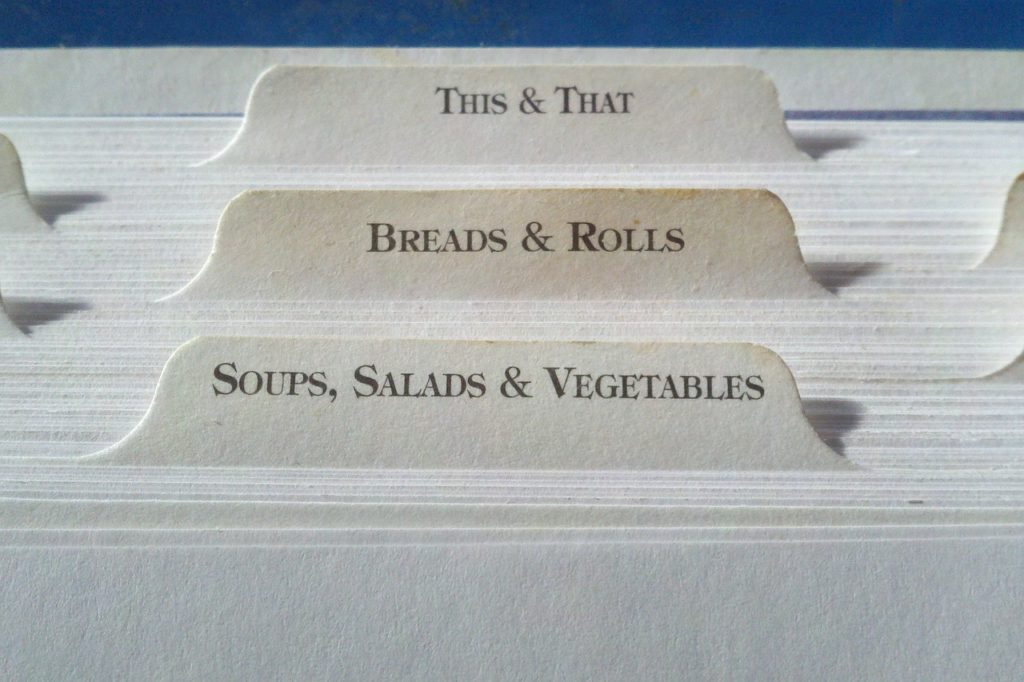
“Keep the box lunch in mind when planning dinner the night before. Oftentimes you can prepare enough soup, main dish, bread, or dessert to take care of tomorrow’s lunch.”
—Good Housekeeping Cook Book, Dorothy B. Marsh [Good Housekeeping: New York] 1955 (p. 580)
Bonus Idea: Leftovers are a perennial favorite for lunchboxes!
Hot/Cold Main Dishes:
- Tuna Salad
- Lettuce Rolls with potato salad (We call it a lettuce wrap.)
Sandwich Breads:
- Two-Tone White and Rye
- Pumpernickel
Sandwich Fillings:
- Corned Beef
Sides:
- Cabbage Wedge to dunk in salad dressing (They recommend French dressing, but you could use any.)
- Raw Cauliflower Florets
- Cheese Cubes
Fruits:
- Tangerine
Desserts:
- No-Bake Cookie Balls (There are countless recipes for these! You can include whatever ingredients you like.)
|Related: 8 Fun Fall Activities for History Lovers
9 Simple School Lunch Ideas from the 1960s
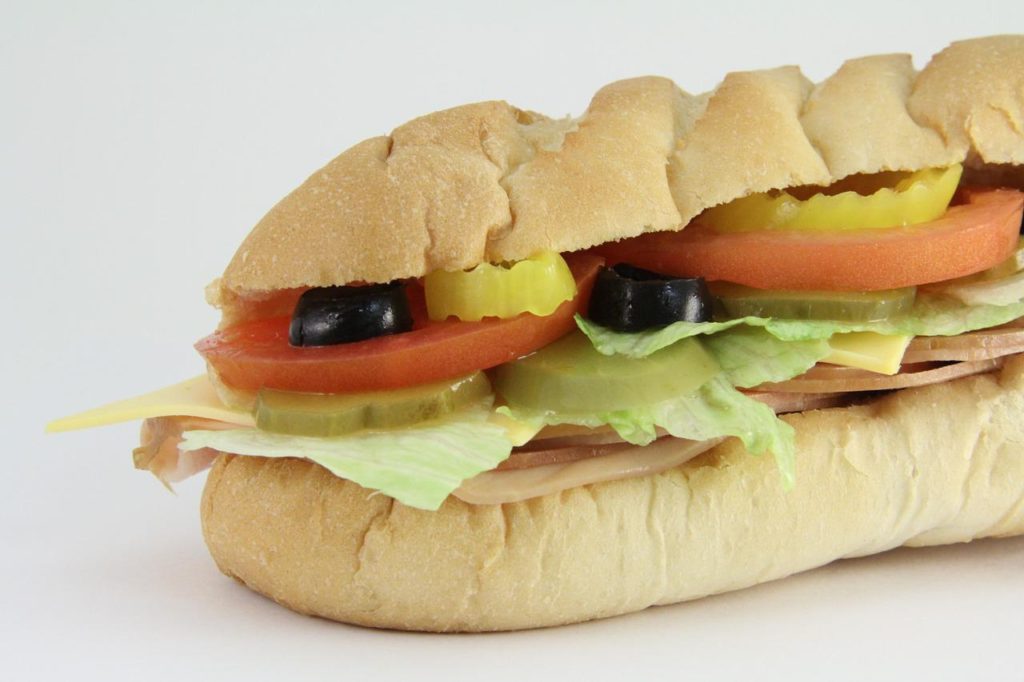
Sandwich Breads:
- Submarine Roll
Sandwich Fillings:
- Peanut Butter* and Bacon
- American Cheese
- Bologna
- Mayonnaise (This is my dad’s contribution. He liked to eat mayonnaise sandwiches as a kid. My daughter likes them too.)
Sides:
- Carrot-Raisin Salad (One of my great-grandmother’s favorites. Again, I highly recommend checking out an old church cookbook.)
Fruits:
- Dried Apricots
Desserts:
- Peanut Butter Cookies* (I found this recipe for Sunbutter cookies. Apparently, the chlorophyll in sunflower seeds can react with the baking soda and turn the cookies green. It’s safe and tasteless, and I’m sure some kids would love it.)
- Chocolate Chip Cookies
10 Simple School Lunch Ideas from the 1970s-1990s
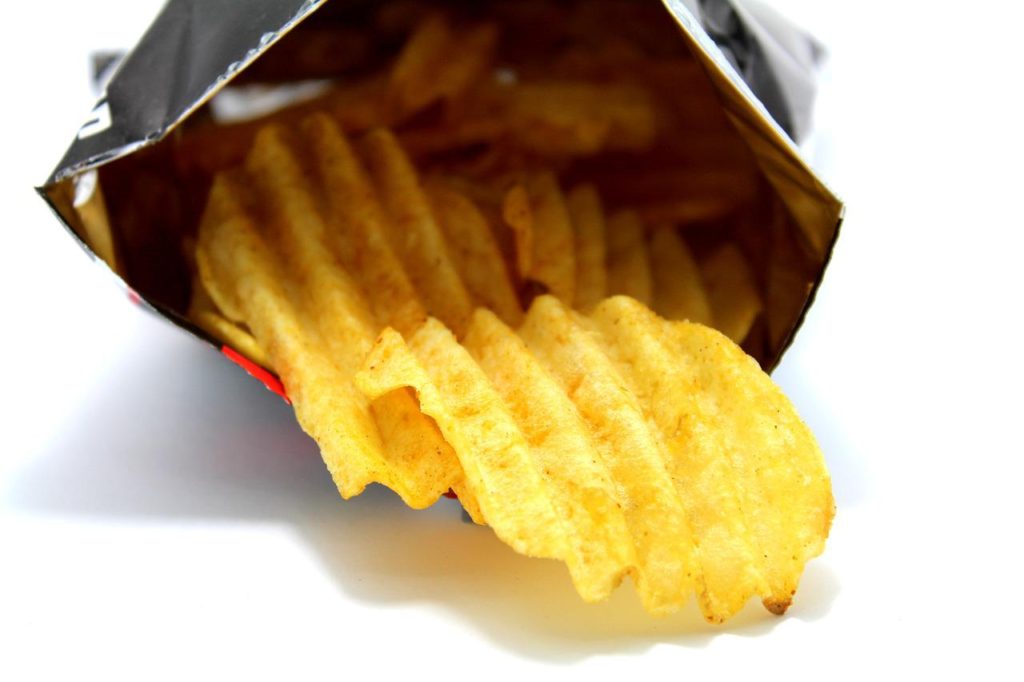
When I started writing this post, my plan was to go straight through the 20th century decade by decade. However. Here at the 1970s we have arrived at an interesting era of the school lunch, which I and I’m sure many of my contemporaries remember.
Yes, indeed, it was the age of individually packaged and heavily branded snack foods.
The perennial favorites remained popular: leftovers, sandwiches, fruit, cookies.
But it was the dawning of the Age of the Lunchable.
Lunchables wouldn’t come on the scene until 1988, just in time for me to go to elementary school. But the spirit of the “sugary, fatty prepared lunch that comes in a disposable plastic tray” was in the air by the late 1970s.
I did some original research and asked folks over at the Hourglass House Facebook page to tell me what they took for lunch in the later decades of the 20th century. Here are their answers.
Hot/Cold Main Dishes:
- Lunchables
- Canned soup carried in a thermos
Sandwiches/Breads:
- Quick breads (Banana, Zucchini, Pumpkin, Date-Nut) with Cream Cheese Spread
- Choices from previous decades also remained popular. Y’all loved a bologna sandwich.
Sides:
- Chips
- Pringles
- Fritos
Fruit:
- By the Foot 😉
Desserts:
- Chips, Ahoy!
- Little Debbie Snack Cakes
What I Ate For Lunch:
In elementary and middle school, I mostly ate the school lunch. In high school in the late 1990s, I switched to packing my own. I remember a lot of carrot sticks, fruit cups in aluminum cans with the pop top, and granola bars, or candy bars by another name.
*Don’t forget to check on your school’s peanut butter/tree nut butter policy! When in doubt, don’t send it!*
What’s in your lunchbox this year?
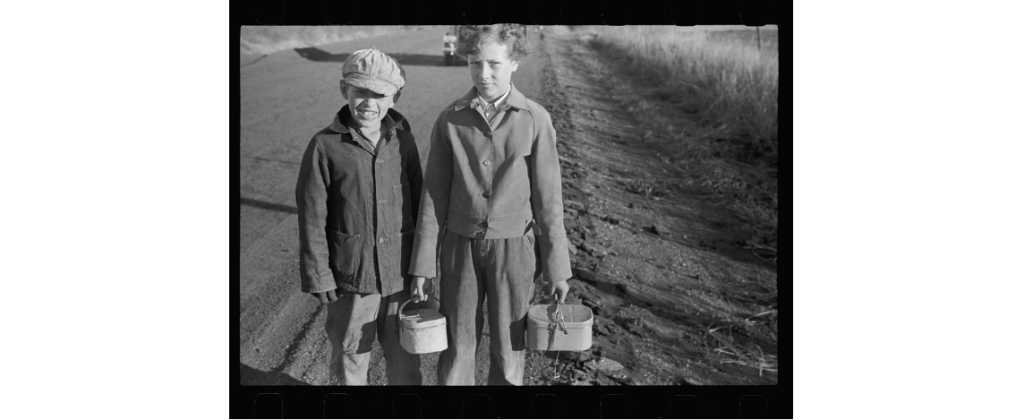
United States Nebraska, 1938. Oct. Photograph. https://www.loc.gov/item/2017717455/.
Whether you’re packing your own lunch or packing a child’s, I hope this list of simple school lunch ideas from the 20th century has given you a place to start. I decided to look back in time for ideas because sometimes it’s so hard just to think of something to pack that will be eaten or that’s not the same thing day after day or that’s reasonably healthy. I kept the emphasis on simple because that’s what I have time for, and I know I’m not alone.
I also made a handy guide that you can print out and put on your fridge. The formula for packed school lunches is timeless:
- a sandwich or something in a thermos
- a side
- a fruit
- a dessert (if you’re lucky)
I’m planning to print this out and have my daughter circle the foods she’d like to find in her lunchbox. From that, I think we’ll be able to make endless combinations, or at least 180, one for each day of school.
To get your FREE printable, “A Century of Simple School Lunch Ideas,” pop your email in the box below and I’ll send it straight to you!
Disclaimer: This post is for information purposes only. It is the reader’s responsibility to know and follow school policies regarding appropriate lunch items and to take responsibility for any food safety issues, including allergies or intolerances.
Pin it for later!

12 comments
That was so interesting! I notice it started off very simple, with minimal prep, and then toward mid-century had gotten to be things that required more prep — soups and salads with multiple ingredients and possibly a recipe involved instead of plain fruit or veggies. So now I’m wondering how much of the processed food craze was reactionary from folks who were tired of doing that not altogether necessary labor and just wanted extremely simple back.
Wow, that’s a super insightful observation! You could be right.
Love these ideas, and it’s so funny how our school lunches aren’t all that different. 🙂
Yes, the formula stays pretty consistent!
Wow, I love this. I can’t imagine how long it took to put it all together. I’m a lazy mom. It’s all about whatever I can easily pack.
It definitely took me a quite a bit longer than I anticipated! Hope you found some good ideas on the list!
I love this walk through the decades and school lunches – it just shows you that in the past we ate some really good food, which perhaps we should be still eating today!
Writing this post definitely made me hungry! And it’s inspired me to really try to emphasize whole foods as much as I can.
This was such a fun article to read! I enjoyed learning about the different lunches through the decadeds. Some were definitely a little strange (butter, mayo, just lettuce), LOL!
Yes, and those were not the strangest! Especially in the first decades, as they were learning more about the science of nutrition, they came up with some odd combinations (cream cheese and peanut butter, for example) in an attempt to get a certain balance of nutrients in the meal. I’m guessing not too many people actually ate some of those.
Really interesting way to break down school lunch ideas! I love it! Also really interesting to see what was popular during different time periods. Thanks so much for sharing!
Food history is really fascinating! I’m glad you enjoyed it.